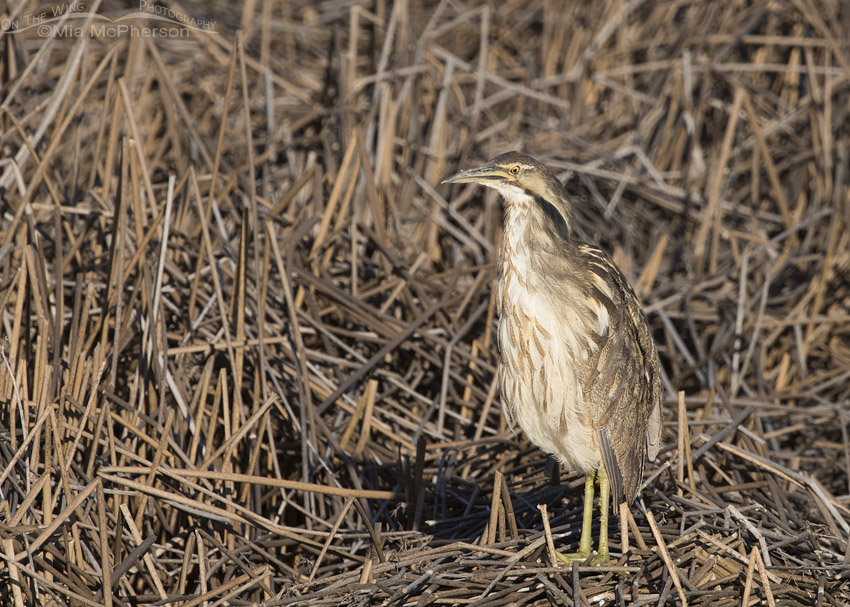 American Bittern on a pile of dead rushes – Nikon D810, f7.1, 1/1600, ISO 400, -0.3 EV, Nikkor 500mm VR with 1.4x TC, natural light
American Bittern on a pile of dead rushes – Nikon D810, f7.1, 1/1600, ISO 400, -0.3 EV, Nikkor 500mm VR with 1.4x TC, natural light
I spent yesterday morning at Bear River Migratory Bird Refuge and was in for a surprise. I thought I saw a juvenile Black-crowned Night Heron on a dead pile of rushes on the west side of the auto tour loop but a second glance at the bird surprised me. The bird I was looking at wasn’t a juvenile Black-crowned Night Heron at all, it was an adult American Bittern out in the open!
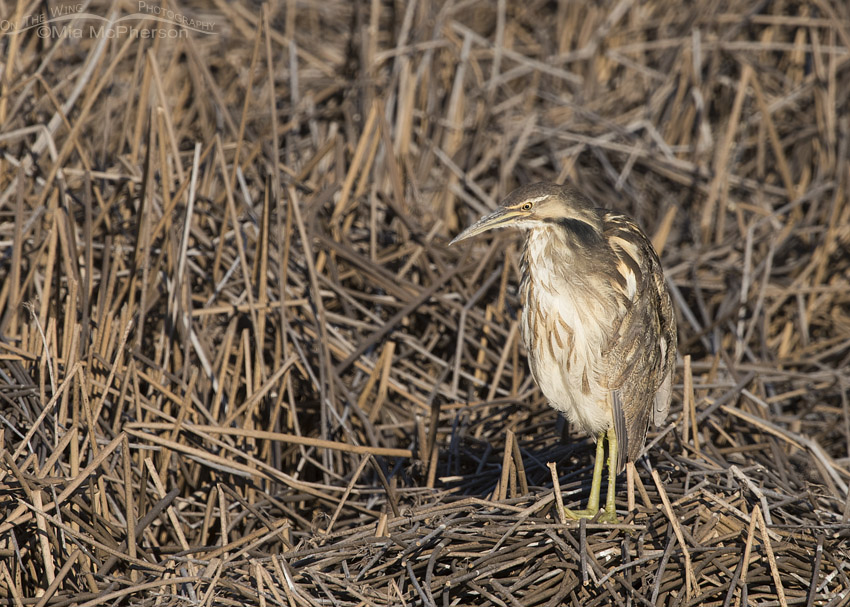 American Bittern adult – Nikon D810, f7.1, 1/1600, ISO 400, -0.3 EV, Nikkor 500mm VR with 1.4x TC, natural light
American Bittern adult – Nikon D810, f7.1, 1/1600, ISO 400, -0.3 EV, Nikkor 500mm VR with 1.4x TC, natural light
American Bitterns are more often seen than heard because they are stealth predators who blend into their marshy habitat well. Unlike many other wading birds they will freeze rather than flush when approached, point their head upward and sway back and forth to blend in with the surrounding vegetation which makes them even harder to see.
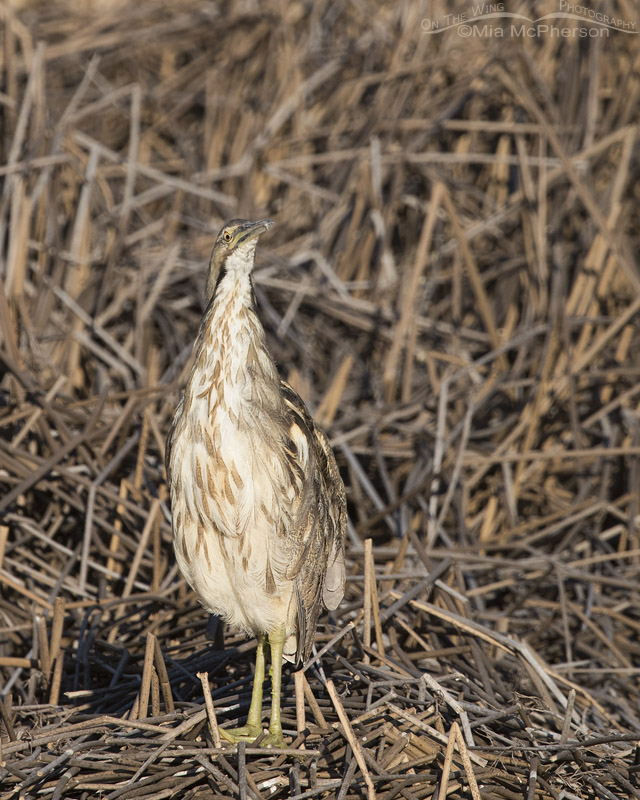 Bear River NWR American Bittern – Nikon D810, f7.1, 1/1600, ISO 400, -0.3 EV, Nikkor 500mm VR with 1.4x TC, natural light
Bear River NWR American Bittern – Nikon D810, f7.1, 1/1600, ISO 400, -0.3 EV, Nikkor 500mm VR with 1.4x TC, natural light
American Bitterns use loud calls to communicate with each other and the calls sound a bit like a water pump. You may need to turn up your volume to hear this recording clearly.
Their booming and gulping calls have earned them nicknames that include “stake-driver”, “water-belcher” and “thunder-pumper”. The bird I saw yesterday wasn’t calling or I might have tried to record it myself.
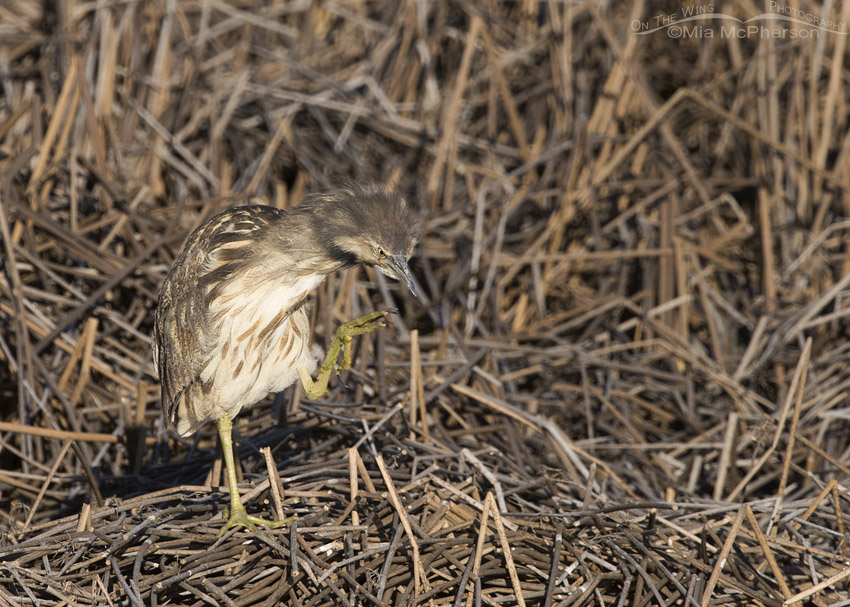 American Bittern Scratching – Nikon D810, f7.1, 1/1600, ISO 400, -0.3 EV, Nikkor 500mm VR with 1.4x TC, natural light
American Bittern Scratching – Nikon D810, f7.1, 1/1600, ISO 400, -0.3 EV, Nikkor 500mm VR with 1.4x TC, natural light
I was very excited because although I have photographed American Bitterns before this was my first opportunity with this species out in the open. It preened for a bit then scratched its head slowly. When I saw its fluffed up head feathers while it scratched I compared them to images I have seen of Albert Einstein’s wild hair and it made me laugh. I admit, I might have an odd sense of humor.
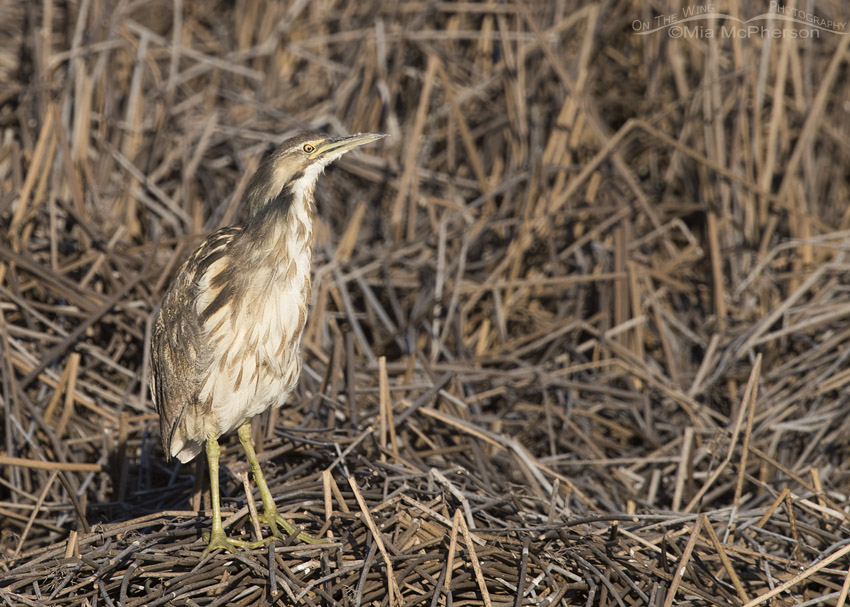 American Bittern out in the open – Nikon D810, f7.1, 1/1600, ISO 400, -0.3 EV, Nikkor 500mm VR with 1.4x TC, natural light
American Bittern out in the open – Nikon D810, f7.1, 1/1600, ISO 400, -0.3 EV, Nikkor 500mm VR with 1.4x TC, natural light
American Bitterns are migratory and will spend winters where there is open water, they breed in the marshes here in Utah and arrive in the early spring to breed.
American Bitterns eat small fish and mammals, insects, crayfish and amphibians.
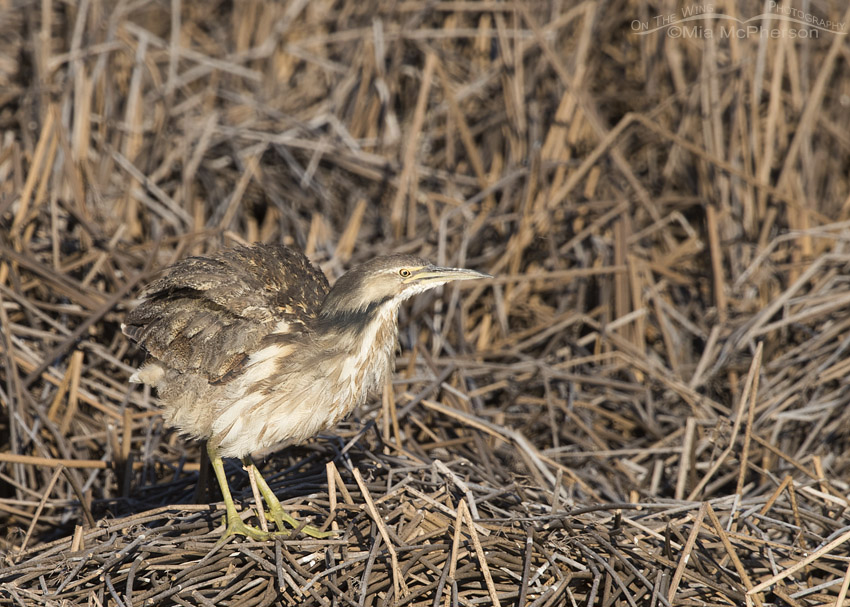 Fluffed up American Bittern – Nikon D810, f7.1, 1/1600, ISO 400, -0.3 EV, Nikkor 500mm VR with 1.4x TC, natural light
Fluffed up American Bittern – Nikon D810, f7.1, 1/1600, ISO 400, -0.3 EV, Nikkor 500mm VR with 1.4x TC, natural light
During the warmer months I always keep an eye out for American Bitterns at Bear River Migratory Bird Refuge but have only been rewarded for my efforts a few times with bitterns that are quite well hidden so yesterdays find made me want to dance with joy!
This bittern eventually flew off and probably found a place where it could hide in the marshy vegetation again.
Life is good.
Mia
Click here to see more of my American Bittern photos plus facts and information about this species.


What an amazing call. Love it.
And yay for seeing one in the open.
I’ve never seen one of these in the wild…an interesting bird…glad you got to see one.
How cool to find one in the open! Wonderful photographs, Mia! They’ll be returning here for the winter in a couple of months and I’ll be staring at the reeds again wondering if it’s a bittern hiding in plain sight.
They really are fascinating birds. They’re so well camouflaged that once I discovered I was staring right at one for some time before I actually saw it, motionless with its neck pointed straight up to the sky. Apparently that’s a defensive posture and I was too close without even knowing it was there. I back off a bit and it started to relax. As always, thanks for sharing Mia.
Wonderful! I had to laugh, I saw a Bitern at BRMBR on Tuesday in about the same place. I was parked taking photos and it crossed the road in front of me. My photos of the Bitern are not good they are back lit, I was afraid to move and spook it, but it was just plain great to see it cross the road in front of my car. It stretched its long neck out as tall as it could and strutted and weaved its neck as it crossed slowly.
I’ve never heard of that species of bird. Thanks for the pics and the lesson!
Beautiful images, Mia.
Very cool! Always exciting to see this species!